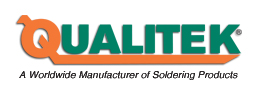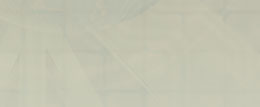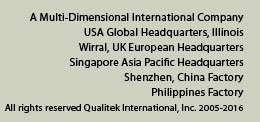| Answers To Some Of The Most Common Questions:
If you can’t fine what you’re looking for, contact your local Qualitek facility or Distributor. We are happy to help.
Is there a drop in replacement for tin/lead?
There is no drop in replacement for tin/lead. The most common lead free (SAC) requires a higher temperature.
What alloy can I use?
SAC for tin/lead. For low temp., there are Sn42/Bi58. For high temp., there are no visible lead free alloys yet.
IF I use the SAC alloy what profile do I need?
The following are the profiles recommended by Qualitek.
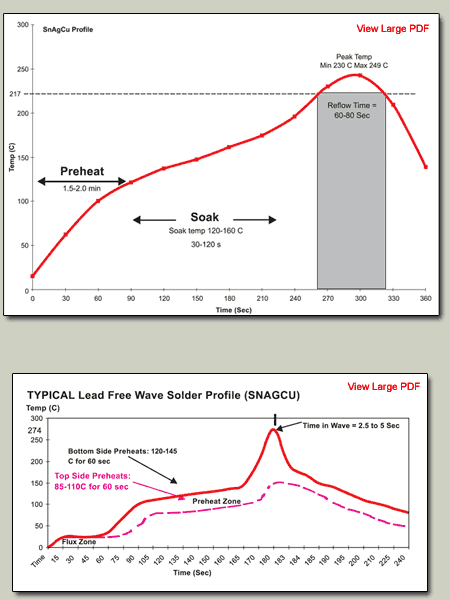
Do I need nitrogen?
It usually depends on the cost vs benefits.
Benefits like:
a) Improved solderability
b) Lower peak temperature profiles
c) Shinier joints
d) Less active flux
e) Lower defect levels
If the benefits outweigh cost, then nitrogen is recommended.
Are there any issues with components?
With lead free solder paste, typical leaded reflow profiles raises from 205°C-220°C to 235°C-249°C. Component must be able to meet this increase in temperature.
Are there any board material issues?
Traditional dicy cured FR4 lamminates are unable to survive elevated lead free reflow profiles. Among the many material properties to consider, base resin decomposition tendency (Td) and coeffcient of thermal expansion (CTE) values are better indicators of lead free survivability. Other properties like T260, T288 and Tg are not good enough as indicators. Laminates designed for improved electrical performance need to be understood and compensated for higher temperature profiles.
Will my joints look the same?
There will be a slight difference in the joint appearance. Lead free joints are more likely to have a dull or grainy surface and the contact angles (wetting angle) will be different. All the other criteria should be the same as tin/lead.
What about reliability?
All the work to date has found no significant differences in reliability of the solder joint.
Do I have to inform my customers about the changes?
Yes if the products are going to the EU.
Are any standards available?
IPC J-Std. JEDEC Standard being drafted.
Where can I get help to give me a smooth change over?
Approach you solder paste provider.
Is the same alloy used for wave and reflow soldering?
Not necessarily. In the case of SAC used in reflow soldering, Sn/Ag or Sn/Cu can also be used in wave soldering if SAC is not the preferred choice, depending on individual requirements. 2 elements alloy will be favored because it is easier to adjust the elements composition.
Are the rules for handling moisture sensitive components the same for lead free?
No because of the higher reflow temperatures, components which are moisture sensitive are more liable to suffer from failures such as “pop corn”. The limits to exposure in uncontrolled environments are dramatically reduced.
Are there any issues with AOI equipment?
There may be a need to re-calibrate the sensor sensitivity as lead free joints are of different brightness. Lead free joints are more likely to have a dull or grainy surface and different wet contact angles. There may be false rejects due to this.
What happens if I use components with tin/lead terminations?
There shouldn’t be much of an issue. Solderability will be better compared to lead free termination as tin/lead has a lower surface tension. Will have to take note if component can withstand the higher reflow profile of lead free alloy. There has been some work that shows that the reliability can be adversely affected if lead level is too high.
Are there any exemptions where tin/lead can still be used?
1. Lead in glass of cathode ray tubes, electronic components and fluorescent tubes.
2. Lead as an alloying element in steel containing up to 0.35% lead by weight and as a copper alloy containing up to 4% lead by weight.
3. Lead in high melting temperature type solders (i.e. tin-lead solder alloys containing more than 85% lead).
4. Lead in solders for servers, storage and storage array systems (exemption granted until 2010).
5. Lead in solders for network infrastructure equipment for switching, signaling, and transmission as well as network management for telecommunications.
6. Lead in electronic ceramic parts (e.g. piezoelectronic devices).
7. Large-scale stationary industrial tools. (This is a machine or system, consisting of a combination of equipment, systems or products, each of which is manufactured and intended to be used only in fixed industrial applications).
8. Spare parts for the repair of Electrical and Electronic Equipment (EEE) placed on the market before July 1st 2006 and to replacement components that expand the capacity of and/or upgrade of EEE placed on the market before July 1st 2006.
9. The reuse of EEE placed on the market before July 1st 2006.
Are there recommended board finishers?
That depends on your application and preference. Ag Immersion is becoming more common for lead free though OSP is also available with lead free performance.
There is also led fee HASL
What are WEEE and RoHS?
WEEE-Directive on Waste from Electrical and Electronic Equipment.
RoHS-Directive on Restriction of Hazardous Substances.
What are the reasons behind the change?
Health concerns of lead.
1) It is a bio-toxin with low exposure limit.
2) Lead in landfill has a high leach rate into groundwater.
3) Lead bio-accumulate in animals and humans.
Will I have to change any of my equipment?
Printer and pick and place machines do not need to be changed. Reflow ovens will need to be upgraded for higher processing temperatures.
What level of lead is permitted?
General consensus seems to be maximum 1000ppm per weight of homogenous material entity.
When does the legislation become law?
July 2006
Are there any issues with rework?
Labeling of component and board need to be developed before rework can be carried out using the correct alloy.
Are there any issues with tin whiskers for component plating using high tin or pure tin coat?
Yes and this has been a point of contention for some companies to include some percentage of lead into the coating.
The above questions are just some of the more common questions. If you have a specific concern, please e-mail our technical department and someone will get back to you promptly.
Qualitek Company Profile
Qualitek International, Inc. is a leading manufacturer of soldering materials for use in the electronic assembly industry. Solder paste, flux, wire, bar, spheres and solder powders are manufactured and marketed around the world. Throughout the companies 25 years of service Qualitek has positioned itself at the forefront of technological innovation. One of the innovations encompasses the development of lead free soldering materials.
Consistent with being one of the industry’s leading suppliers, Qualitek has dedicated over 10 years of research toward developing suitable lead free materials for use in the electronic assembly industry. Qualitek offers advanced solutions for lead –free applications.
Qualitek International, Inc. ISO 9001:2000 and QS 9000 certified company.
This information was provided by Qualitek Singapore Pte., Ltd. and Qualitek Shenzhen China All rights reserved
|
